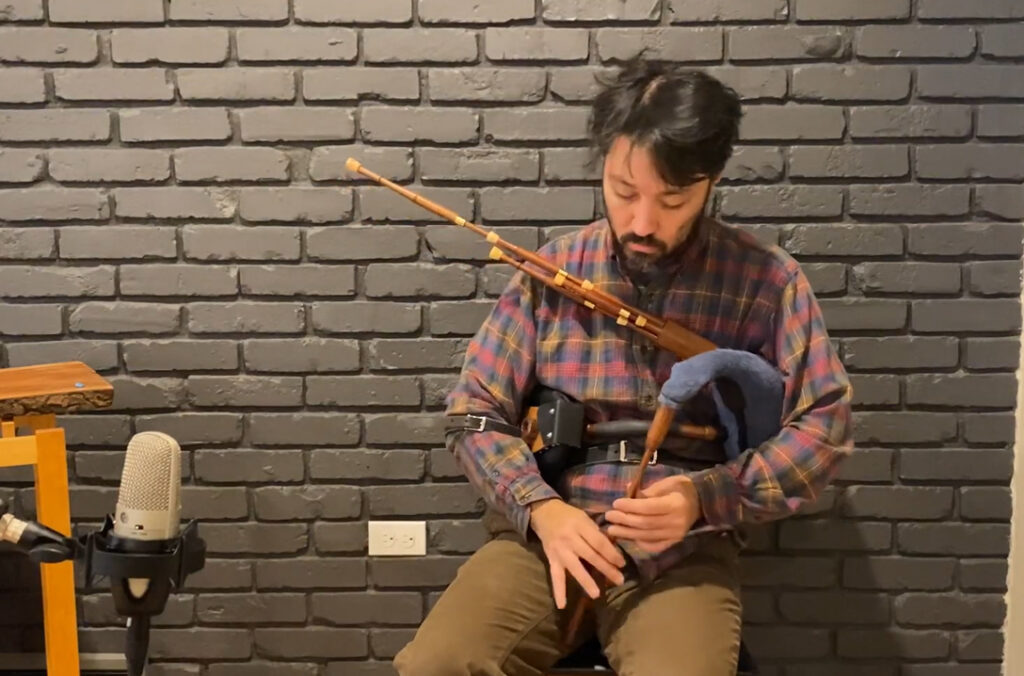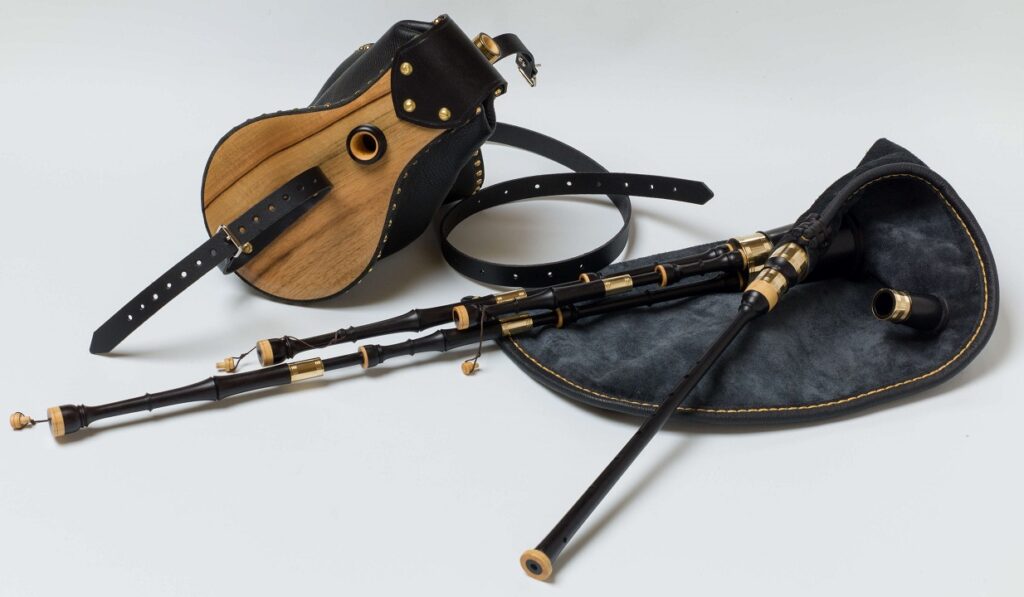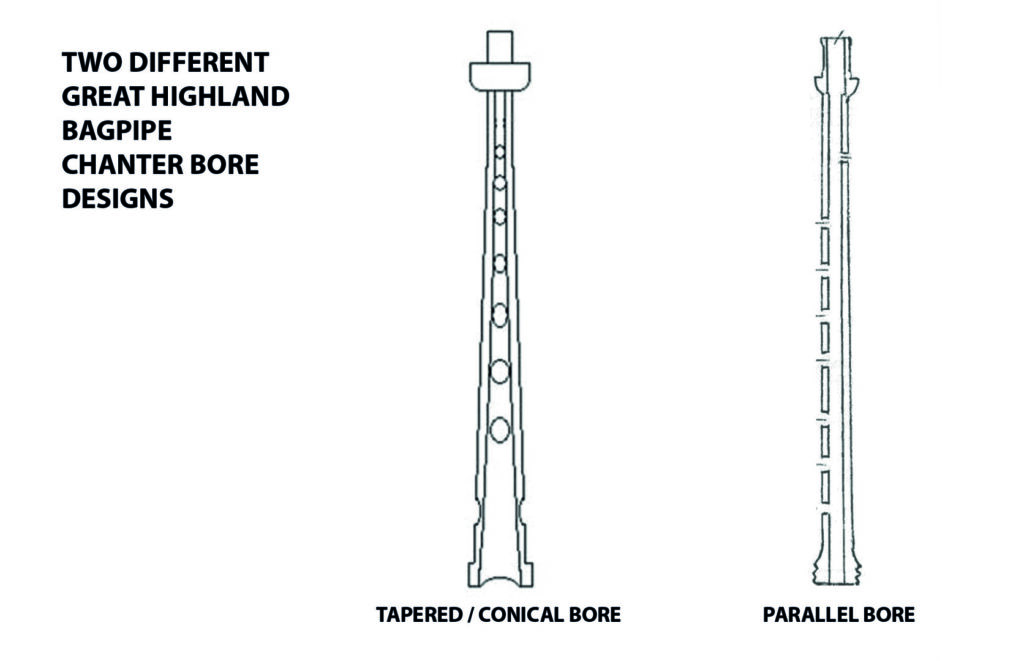Back when I was young, I never questioned playing the Great Highland Bagpipes indoors… they were LOUD and I needed to find a better option. That’s when I found smallpipes!
Recently, I had someone ask me what options there are for playing bagpipes indoors, ideally with lower overall sound volume. In this article, we will focus on Scottish Smallpipes because there are also pipes from all over Europe that could fall into the category of smallpipes. So let’s keep it simple.
The term “Smallpipes” can be a bit misleading. Smallpipes includes a great deal of different bagpipes and yet, sometimes the term is quite specific. The diameter and length of the drones are typically smaller than the Great Highland Bagpipe (GHB) and in most cases, the sound volume is much less than the GHB. Manufacturers like to use different names for the same product just to stand out. The simplest way to narrow this down is by determining drone orientation, how we put air in the pipe bag, volume of the pipes and lastly the key that you would like to play in.
Below, I have broken down these categories so you can better understand what type of smallpipes are best for you.
DRONE ORIENTATION
In the simplest form, there are two positions for the drones to rest. Those are:
- Vertical Drones – Drones will rest on the shoulder just like the Great Highland Bagpipes. One consideration is that you can march with an instrument built in this fashion. These pipes include:
- Fireside
- Parlor Pipes
- Reel Pipes
- 3/4 Bagpipes – sometimes referred to as miniature bagpipes
- Horizontal Drones – drones will rest on the lap or inner elbow. You will likely sit down playing a set of pipes like these. These pipes include:
- Shuttle Pipes
- Border Pipes


There are some pros and cons playing different drone configurations. If you like to march while playing, it’s best to go with vertical drones. Keep in mind that you can still sit down playing vertical drones, so they are versatile.
HOW WE FILL THE BAG
There are two methods of keeping Smallpipes winded:
- Mouth Blown – just like the Great Highland Bagpipes
- Pros – just like you are used to on the GHB, so you’ll be able to play your new smallpipes without changing your playing style
- Cons – moisture is introduced to the instrument which can cause reeds to change pitch
- Bellows Blown – The bellows are a device that goes under your right arm which provide your pipes with the required air flow to make the pipes sound. You will need to move your arm away from your body and back to actuate this device.
- Pros – no moisture from your breath will enter the bag, so your reeds will be more stable
- Cons – you’ll need to learn to use bellows. Don’t worry, you’ll figure it out quickly.


SOUND VOLUME
The overall sound volume of the instrument is set by the chanter that you are using and they fall into two categories
- Parallel Bore Chanter – sounds much like a practice chanter with approximately the same overall sound volume as a practice chanter. Perfect for playing indoors. These smallpipes use the parallel bore chanter:
- Folk
- Fireside
- Parlor Pipes
- Shuttle Pipes
- Conical Bore Chanter – Much like the GHB, the inner bore of the chanter is cone shaped. This in turn provides more volume and a different sound than the parallel chanter. Keep in mind, the volume from this chanter is still less than the GHB, so they are good to use if you’re playing sessions with your friends but could be too loud for playing indoors, depending on your audience. You’ll find this conical chanter on the following types of pipes:
- Reel Pipes
- Border Pipes

KEY OF THE PIPES
The last part of playing smallpipes is to determine what key that you would like to play in. This is the pitch of the chanter which will affect the overall pitch of your pipes. Not all pipe makers allow you choose the pitch because it means that they need to make a different chanter for each pitch range. The most common pitch for Scottish smallpipes is the key of A (440 Hz) but with some makers you can choose from A, B, C or D.
Michael Roddy and his friends playing in the key of A
Fred Morrison playing smallpipes in D
Brìghde Chaimbeul playing a lovely set of smallpipes
WHERE CAN I FIND A SET OF SMALLIPES?
When doing research for this blog post I found that there are many current (and past) smallpipe makers out there, offering stunning pipes in every shape and size. These people are amazing craftsmen that can make you a unique heirloom style instrument should you choose to go down that path. At the time of writing this article, we have over 37 makers of smallpipes listed on our website and I would hazard to guess that there are 100’s of smallpipe makers still building pipes to this day. Now you will have to start your own research to find the best set of pipes for you.
Of course you can buy new sets of pipes but this website does not promote any one pipe maker. So what I’ve done is used the filters on Bagpipe Central to pull all of the smallpipes that are currently for sale on our website. This link below will give you a great head start to find what you are looking for.
SMALLPIPES FOUND ON BAGPIPE CENTRAL
UNIQUE BAGPIPING USING SMALLPIPES
Something a little out of the ordinary for smallpipes is this jazz fusion smallpipe set!
Hopefully you have found this informative and helpful. Now it’s time for you to consider smallpipes if you want to play indoors or even more enticing is to play with other musicians!
Cheers,
Kyle Campbell
Bagpipe Central
Please contact us if you have questions / concerns about this article, or if you have an idea that you would like to share with our audience.



I want to play indoor pipes I want to use them in sessions and also on stage GHB definitely too loud . I’ve played with smallpipes in sessions but I find them a bit too soft and also the souns is a bit squeaky for me. SO I’m looking at border / reel pipes. But tere are idffering reports about their volume in sessions. Some say just too loud some say ‘maybe’. Is it possible to get border pipes that are a bit softer than normal ?
Hi Wellsy,
You’re correct, the GHB are way too loud for sessions. We would suggest you look for smallpipes like Walsh or Fred Morrison pipes rather than Border/Reel Pipes which tend to be quite loud. The chanter you are looking for will be more like a practice chanter dimensions and bore. The parallel bore chanters are much quieter than a tapered bore chanter.